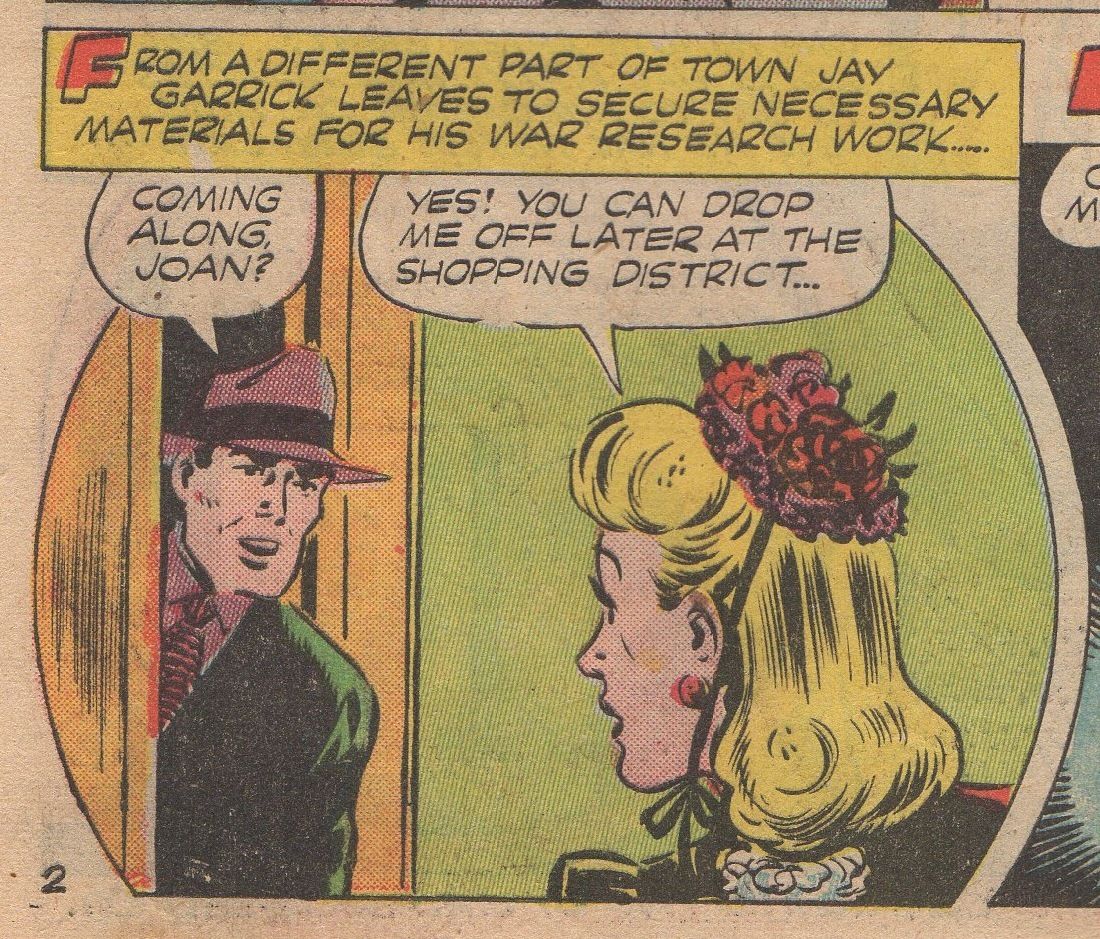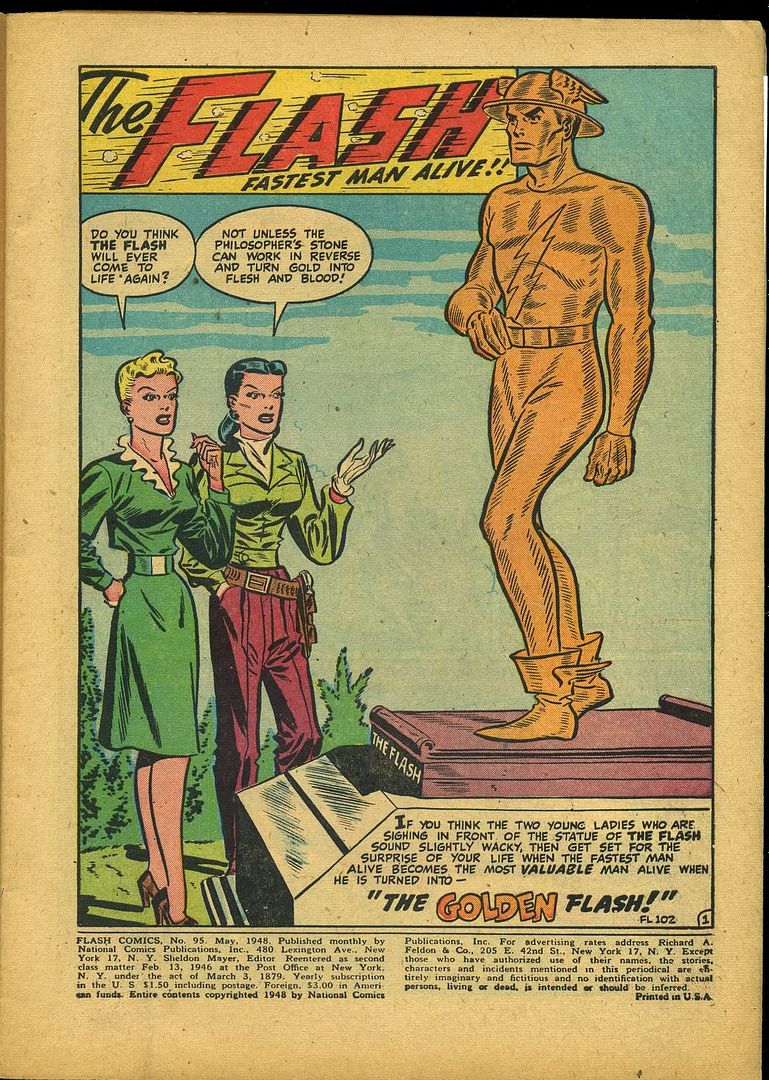In the days of ancient Egypt, Prince Khufu was the foe of the high priest of the god Anubis, Hath-Set, who intended to conquer the world. Hath-Set’s soldiers captured Khufu and his beloved, Shiera, and Hath-Set fatally stabbed Khufu. Before his death, Khufu predicted that both he and Hath-Set would one day live again, and that next time Khufu would be the victor.
Many centuries later, the wealthy scientist Carter Hall came into the possession of the very knife with which Khufu had been murdered. Hall then had a dream about Khufu’s death and realized that he was Khufu’s reincarnation. Shortly afterwards, Hall first met Shiera Sanders, the reincarnation of Khufu’s beloved. Hath-Set also had been reincarnated, as the scientist Dr. Anton Hastor, and still planned to conquer Earth.
Hall garbed himself in the guise of the Egyptian hawk-god, including large artificial wings and a belt of "ninth metal," a discovery of Hall’s that could defy gravity. Using the belt and wings, Hall could fly. As Hawkman, Hall tracked down Hastor and prevented him from killing Shiera. Hastor apparently died, but he later returned to battle Hawkman again.
Hawkman launched a career as a super-hero, and Shiera became his partner as Hawkgirl. A founding member of the Justice Society of America, Hawkman became its third chairman, a position he has held ever since. He was also a member of the war-time All-Star Squadron.
In 1946 Hawkman discovered Feithera, a hidden city of bird-people in Greenland. He became a frequent visitor there, and he and Hawkgirl became the godparents of Norda, now known as the super-hero Northwind, who is the son of a human and a Feitheran.
Hawkman and Hawkgirl both retired after the Justice Society disbanded in 1951. Hall married Shiera, and they had a son, Hector, who later became the super-hero known as the Silver Scarab. Hall returned to his career as Hawkman when the Justice Society was reactivated, and he serves as its chairman to this day. His true identity is now publicly known.
POWERS AND WEAPONS
Hawkman can fly at great speed using artificial wings and an anti-gravity belt made of "ninth metal." The belt also enables him to lift great weights aloft. In addition, he wields ancient and medieval weapons from his extensive collection in battle and can communicate with birds.
Hawkman is a superb hand-to-hand combatant. He retains unusual physical vitality even today, thanks to having absorbed temporal energy from the villainous Ian Karkull decades ago.
(reprinted from various internet sources)
Friday, November 30, 2012
Saturday, November 24, 2012
Entry #3
For those unfamiliar with the series, as I was just a couple years ago, I would like to introduce some of the many characters that appeared in the Flash Comics series throughout the decade (reprinted from various internet sources).
Jay Garrick (the Flash)
Jay Garrick and his future wife, Joan Williams, were students at Midwestern University. One day while there, Garrick accidentally tipped over a beaker full of an experimental form of "hard water" he had been studying. The spilled liquid gave off fumes that rendered Garrick unconscious, and he lay inhaling the fumes all night. Afterward he discovered that the fumes had given him the power to move at superhuman speed. He became the costumed crimefighter known as the Flash. At first only Joan Williams knew that the Flash was really Jay Garrick. (Although Garrick wore no mask as the Flash, he maintained waves of vibrations over his face while he was in costume, thereby preventing anyone from clearly seeing his features.) The Flash became a founding and the first chairman of the Justice Society of America.
During the war, Jay work for the War Department was classified. This is a rare instance that he revealed any involvement with the war (Issue #48).
Garrick retired as the Flash in 1951 as a result of his refusal to reveal his true identity to a congressional committee. Eventually, he married Joan Williams. Years later Garrick resumed his career as the Flash as a result of meeting the Flash of a parallel world, and in order to battle his three old foes the Fiddler, Shade, and Thinker. The original Flash also returned to service with the reactivated Justice Society, and in recent years has publicly revealed his true identity.
POWERS AND WEAPONS
The Flash possesses the power to move at superhuman speed, and can attain velocities equal to that of the speed of light (186,000 miles per second). His superhuman endurance enables him to run great distances without tiring. The Flash’s endurance has diminished somewhat with age, although, due to the effects of the temporal energy he absorbed from the villainous Ian Karkull, he retains far more physical vitality than he otherwise would.
The Flash possesses an aura of unknown energy that protects him from friction heat and the other adverse effects of movement at super-speed.
The Flash also has absolute mental control of his body’s atoms and molecules. He most often uses this power to vibrate his atoms at such high speeds that they can slip past atoms of solid object, enabling the Flash to pass through such objects without damaging them. He can also travel to other dimensions through varying the vibratory rate of his atoms. The Flash can also vibrate his clothing and even another human he is holding through a solid object or into another dimension with him.
Jay Garrick (the Flash)
Jay Garrick and his future wife, Joan Williams, were students at Midwestern University. One day while there, Garrick accidentally tipped over a beaker full of an experimental form of "hard water" he had been studying. The spilled liquid gave off fumes that rendered Garrick unconscious, and he lay inhaling the fumes all night. Afterward he discovered that the fumes had given him the power to move at superhuman speed. He became the costumed crimefighter known as the Flash. At first only Joan Williams knew that the Flash was really Jay Garrick. (Although Garrick wore no mask as the Flash, he maintained waves of vibrations over his face while he was in costume, thereby preventing anyone from clearly seeing his features.) The Flash became a founding and the first chairman of the Justice Society of America.
During the war, Jay work for the War Department was classified. This is a rare instance that he revealed any involvement with the war (Issue #48).
Garrick retired as the Flash in 1951 as a result of his refusal to reveal his true identity to a congressional committee. Eventually, he married Joan Williams. Years later Garrick resumed his career as the Flash as a result of meeting the Flash of a parallel world, and in order to battle his three old foes the Fiddler, Shade, and Thinker. The original Flash also returned to service with the reactivated Justice Society, and in recent years has publicly revealed his true identity.
POWERS AND WEAPONS
The Flash possesses the power to move at superhuman speed, and can attain velocities equal to that of the speed of light (186,000 miles per second). His superhuman endurance enables him to run great distances without tiring. The Flash’s endurance has diminished somewhat with age, although, due to the effects of the temporal energy he absorbed from the villainous Ian Karkull, he retains far more physical vitality than he otherwise would.
The Flash possesses an aura of unknown energy that protects him from friction heat and the other adverse effects of movement at super-speed.
The Flash also has absolute mental control of his body’s atoms and molecules. He most often uses this power to vibrate his atoms at such high speeds that they can slip past atoms of solid object, enabling the Flash to pass through such objects without damaging them. He can also travel to other dimensions through varying the vibratory rate of his atoms. The Flash can also vibrate his clothing and even another human he is holding through a solid object or into another dimension with him.
Friday, November 16, 2012
Entry #2
What got me interested in Flash Comics? I grew up on Bronze Age DCs. Also ‘Conan The Barbarian’ had a sway on this once skinny boy envious of the all the interest girls shown the bigger boys. I was introduced to Flash Comics through the CGC GA boards. My first purchase was #40.
I like the series because it represents the early days of the pre-hero DC universe with the back-up stories, along with ‘new’ superhero characters the Flash and the Hawkman. Unlike Superman and Batman, these superheroes have private lives that they share with their female companions, and occasionally with old friends. As a plot devise, this frees Gardner Fox from the obstacles that at times makes Superman and Batman stories redundant. World events creep into the stories – although it isn’t until 1944 that both the Flash and Hawkman hints at a world at war in their regular monthly strips.
The backup stories like Johnny Thunders and the Ghost Patrol are lighthearted comedic adventures that can be enjoyable to read. Like the Sunday Funnies section of old, to read Flash Comics is similar in that each story has a distinct flow to it, month-after-month. It was after reading about three or four issues that I got curious to learn more about DC Comics during the 1940s.
By the end of the decade, Flash, Hawkman, and Black Canary gives us glimpses of what Silver Age superheroes will look\feel like in the future. It seems odd after reading the last 12 issues of the series why it ended. Those are some of the best issues of the whole series.
Subscribe to:
Posts (Atom)



